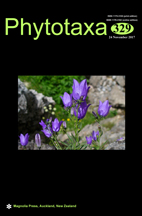Abstract
Lecanora stainislai is characterized by a very thin sorediate thallus, forming a more or less continuous layer of soredia and by the production of usnic acid and zeorin. It usually grows on smooth bark of trees in forests and is known from the Czech Republic, Norway, Poland, Russia, Ukraine and western North America (Canada, USA). It is chemically similar to the sorediate L. compallens, which however has an episubstratal thallus in non-sorediate parts and often delimited soralia. They have also different phylogenetic positions within the L. symmicta group. Moreover, based on molecular marker analysis the position of L. expallens is resolved within this group for the first time.

